Service
Service & Calibration
Redpost offers a full maintenance and repair service. We recommend that all PU monitors and probes are serviced annually, unless an item is damaged in which case it should be sent to us immediately. However, if you implement a quality management system such as ISO9000 then more or less frequent servicing may be required. All new equipment is designed to be serviceable for 10 years after the date of purchase.
All new instruments are calibrated when leaving the factory, this calibration is valid for 12 months.
Specification conformance certificates are supplied as standard.
Redpost recommend a yearly calibration at the same time as a service unless prompted by damage or performance.
Please note it is very important to calibrate both the PU monitor and the probes!
The printer/charger units do not require calibration.
- Case inspected for damage
- Discrete Sealing components replaced
- Desiccant replaced
- Batteries Serviced or Replaced
- Connectors Serviced or Replaced
- Electronics inspected for damage (if needed)
- Electronics tested
- Prolonged thermal stability testing
- Housing pressure tested (if needed)
- Housing cleaned
- Returned with:
- New frame screws
- Paper calibration certificate
Preventative Maintenance
Annual Service & Calibration
A regular routine for service and calibration will keep your PU Monitors in accurate and in top condition. If you are using higher temperatures such as with pasteurising fruit juices then a more frequent service routine may be required. Staggered scheduling will prevent problems that would occur if all your calibrations run out on the same day. We suggest you obtain enough instruments to allow a staggered service and calibration regimen as well as offering coverage for unscheduled breakdowns.
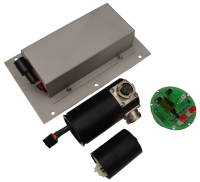
Battery Life
Redpost PU Monitors use rechargeable batteries. On a full charge this will last 2-15 runs through the pasteuriser(see this FAQ question for details), however as the battery ages its capacity drops. The useful battery life of Redpost PU monitors is normally 1-2 years depending on usage and pasteurisation temperatures. However, to get the most out of the battery there are some simple things that can be done.
- Do not leave the monitor on charge longer than necessary
- Do not leave the monitor on charge longer than 24 hours
- Do not leave the monitor unused for an extended length of time (more than 3 months) without top-up charge
- Try to charge the monitor when it has cooled down from the pasteuriser (The monitor will not charge if too hot)
Calcheck & Test Plugs
As well as an annual factory calibration it is possible to perform adhoc calibration checks, there are two ways
to do this.
Test plugs
A 60 degree test plug can be supplied with each new PU monitor, this emulates a standard temperature probe at 60°C
simply plug this into your monitor and the display will show the measured temperature, if this is out of specification then
the unit should be returned for servicing.
Calcheck
The RPC-80 has a built in facility to check the calibration at 60°C. This can be scheduled to happen every day, week or
month the first time each monitor is attached. If a monitor fails this test, the unit should be returned for servicing.
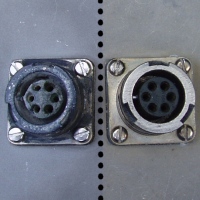
Socket Latching
Redpost PU Monitors use bayonet connectors for attaching probes. These bayonets must be 100% latched (until it 'clicks') in order to properly seal the connector. Without a full latch water can ingress and damage the pins and receptacles of the probe and monitor causing errors in results. On the latching ring of the connector are three round depressions, one of these needs to be pointing straight up to make the connector 'click' and signify a full latch. If a connector is difficult to latch a light grease can be used to ease the rotation.
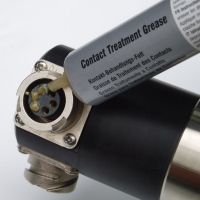
Greasing sockets
In order to prevent damage as well as provide the most accurate results the pins of a PU monitor's sockets must be greased. New instruments are supplied with pre-greased sockets and a tube of contact grease. The PU monitor contains a timer which will remind the operator to apply the grease. Extra tubes of grease are available from Redpost.
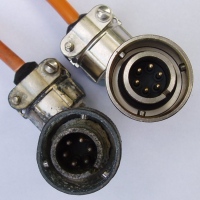
Missing sealing rings
The sockets on the PU monitors are sealed with a rubber sealing ring housed in the connector on the probe lead.
If the connectors are not being latched properly, water damage can cause the sealing ring to come away and 'stick' to the socket.
It is then easy for the ring to get lost or become attached to the next probe connected, probes returned for calibration often
are missing sealing rings.
It is important that if the sealing ring comes away the sealing ring is replaced before running through the pasteuriser. It may
be prudent to check probe leads periodically and spare sealing rings are available on request.
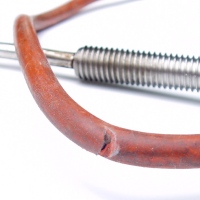
Condition of cables
If nicks or cuts
are noticed then the affected probes should be sent for repair immediately. Small areas of damage can allow water to capillary
through the cable and can end up damaging the electronic components.
Charging cables can also be damaged which may lead to communication problems or batteries not charging fully.
Returns
Before you send any equipment back to us please review the information on our Returns page
